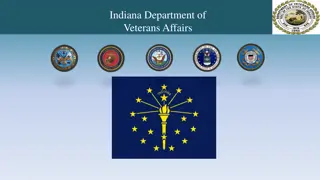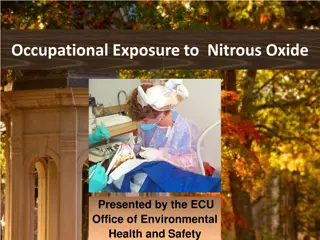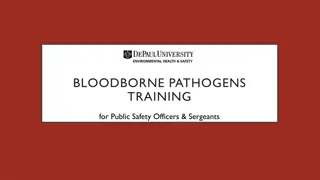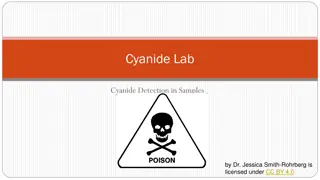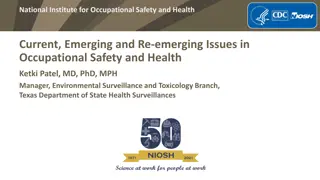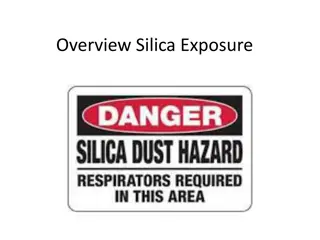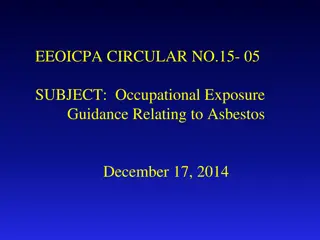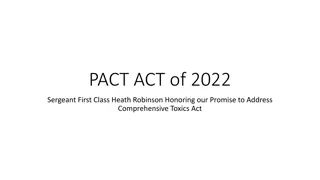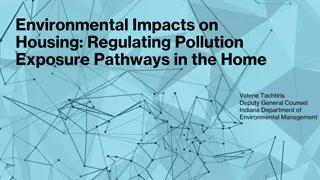Understanding Agent Orange Exposure and Associated Diseases
Agent Orange was a tactical herbicide used by the U.S. military during the Vietnam War, leading to long-term health issues for exposed veterans. The VA provides free health exams and benefits for eligible veterans and their families affected by diseases like diabetes, cancer, and neurological disorders associated with Agent Orange exposure.
Download Presentation

Please find below an Image/Link to download the presentation.
The content on the website is provided AS IS for your information and personal use only. It may not be sold, licensed, or shared on other websites without obtaining consent from the author. Download presentation by click this link. If you encounter any issues during the download, it is possible that the publisher has removed the file from their server.
E N D
Presentation Transcript
AGENT ORANGE AND BLUE WATER NAVY William Genochio, VBA Coordinator Department Service Officer
WHAT IS AGENT ORANGE was a tactical herbicide used by the U.S. military for control of vegetation. It was named for the orange band around the storage barrel. The military sprayed Agent Orange and other tactical herbicides during the Vietnam War. Veterans who may have been exposed to Agent Orange include Veterans who served in different locations, including Vietnam, the Korean Demilitarized Zone, on Thai Air Force bases, at other locations, and who flew on or worked on C-123 Aircraft.
AGENT ORANGE AND THE VA VA offers eligible Veterans a free Agent Orange Registry health exam for possible long-term health problems related to exposure. VA also offers health care, disability compensation, and other benefits to eligible Veterans for certain disease conditions, as well as benefits for children of Vietnam Veterans who have spina bifida. Dependents and survivors may also be eligible for other benefits.
DISEASES ASSOCIATED WITH AGENT ORANGE AL Amyloidosis A rare disease caused when an abnormal protein, amyloid, enters tissues or organs Chronic B-cell Leukemias A type of cancer which affects white blood cells Chloracne (or similar acneform disease) A skin condition that occurs soon after exposure to chemicals and looks like common forms of acne seen in teenagers. Under VA's rating regulations, it must be at least 10 percent disabling within one year of exposure to herbicides. Diabetes Mellitus Type 2 A disease characterized by high blood sugar levels resulting from the body s inability to respond properly to the hormone insulin
DISEASES CONTINUED Hodgkin's Disease A malignant lymphoma (cancer) characterized by progressive enlargement of the lymph nodes, liver, and spleen, and by progressive anemia Ischemic Heart Disease A disease characterized by a reduced supply of blood to the heart, that leads to chest pain Multiple Myeloma A cancer of plasma cells, a type of white blood cell in bone marrow Non-Hodgkin's Lymphoma A group of cancers that affect the lymph glands and other lymphatic tissue Parkinson's Disease A progressive disorder of the nervous system that affects muscle movement Peripheral Neuropathy, Early-Onset A nervous system condition that causes numbness, tingling, and motor weakness. Under VA's rating regulations, it must be at least 10 percent disabling within one year of herbicide exposure.
DISEASES CONTINUED Porphyria Cutanea Tarda A disorder characterized by liver dysfunction and by thinning and blistering of the skin in sun-exposed areas. Under VA's rating regulations, it must be at least 10 percent disabling within one year of exposure to herbicides. Prostate Cancer Cancer of the prostate; one of the most common cancers among men Respiratory Cancers (includes lung cancer) Cancers of the lung, larynx, trachea, and bronchus Soft Tissue Sarcomas (other than osteosarcoma, chondrosarcoma, Kaposi's sarcoma, or mesothelioma) A group of different types of cancers in body tissues such as muscle, fat, blood and lymph vessels, and connective tissues
EXPOSURE TO AGENT ORANGE BY LOCATION Exposure to Agent Orange in Vietnam Presumed exposure on land in Vietnam, on a vessel operating on the inland waterways of Vietnam, or on a vessel operating not more than 12 nautical miles seaward from the demarcation line of the waters of Vietnam and Cambodia as defined in Public Law 116-23 (Blue Water Navy Vietnam Veterans Act 2019) between January 9, 1962 and May 7, 1975 C-123 Airplanes and Agent Orange Residue Possible exposure of C-123 flight, ground maintenance, and aeromedical crew members to herbicide residue in C-123 planes flown during and after after the Vietnam War
EXPOSURE TO AGENT ORANGE BY LOCATION Korean Demilitarized Zone Presumed exposure for units determined by VA and DoD to have operated along the demilitarized zone in Korea between Sept. 1, 1967, and August 31, 1971. Thailand Military Bases VA considers disability benefits claims based on exposure to herbicides on a U.S. military base in Thailand or Royal Thai Air Force base between January 9, 1962, and May 7, 1975, on a case-by-case basis. Herbicide Tests and Storage Outside Vietnam Possible exposure due to Department of Defense herbicide tests and storage at military installations in the United States and at locations in other countries.
AGENT ORANGE IS NOT A DISEASE OR CONDITION It is important to know that Agent Orange is not a service- connected condition. The earlier discussed conditions are the only things the veteran can be service connected for. It is important for veterans that served in these areas of operations do indeed have the Agent Orange Registry exam as we will discuss later today.
BLUE WATER NAVY VIETNAM VETERANS Blue Water Navy Veterans who served aboard ships in the open waters off the coast of Vietnam during the Vietnam War are now presumed to be exposed to Agent Orange. If we denied your claim in the past, you can file a new claim based on Public Law 116-23. This needs to be filed on a VA Form 20- 0995 Supplemental Claim. Children of U.S. Veterans who served in Thailand during the Vietnam War may now be eligible for benefits. If your child was diagnosed with spina bifida (except spina bifida occulta), learn more about eligibility for birth defects linked to Agent Orange.
AGENT ORANGE EXPOSURE IN THE REPUBLIC OF VIETNAM WATERS (BLUE WATER NAVY) Blue Water Navy Veterans are now entitled to a presumption of service connection for conditions related to Agent Orange exposure. This extension of the presumption is a result of Public Law 116-23, the Blue Water Navy Vietnam Veterans Act of 2019, signed into law on June 25, 2019. The law takes effect January 1, 2020. January 1, 2020 is the date that the VA would award if the veteran never filed a claim.
WHAT WILL THE EFFECTIVE DATE FOR BENEFITS BE FOR BLUE WATER NAVY VETERAN CLAIMS? Presumptive Agent Orange conditions granted for Blue Water Navy Veterans may be retroactive to the date VA received your original claim. If you had a previously denied claim and you resubmit your claim, the effective date will be determined on a case- by-case basis.
MAY THE SURVIVING SPOUSE OF A BLUE WATER NAVY VETERAN WHO PASSED AWAY FROM A CONDITION RELATED TO AGENT ORANGE EXPOSURE, AND WHO WAS PREVIOUSLY DENIED COMPENSATION FOR SUCH CONDITION, BECOME ENTITLED TO DEPENDENCY AND INDEMNITY COMPENSATION (DIC)? If the Veteran served on a Navy or Coast Guard ship that that operated not more than 12 nautical miles from the demarcation line of the waters of Vietnam and Cambodia as defined in the Blue Water Navy Act of 2019 and the cause of death was from a condition related to exposure to Agent Orange, then VA may award entitlement to DIC on that basis.




